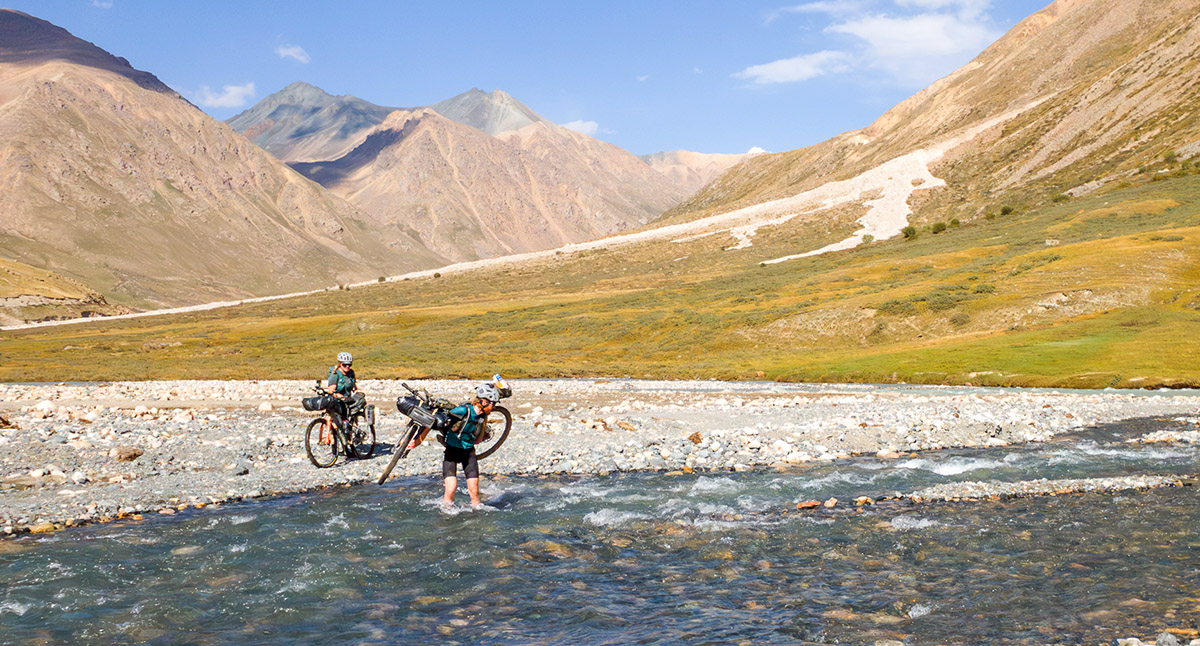Marie-Pierre on the Silk Road Mountain Race
Editor’s Note: It often surprises (and delights) us when we find out what our customers do with our tires. The Silk Road Mountain Race in Kyrgyzstan is widely considered the toughest race in the world. We all know that Sofiane Sehili has won the Silk Road three years in a row, but the race at the front doesn’t even begin to tell the whole story of this incredible adventure. So when Marie-Pierre Savard’s amazing images and insightful observations popped up on our social media, we asked her whether she’d write a story about her very personal experience in the race. Here are her observations and reflections.—JH
After returning to Quebec a few weeks ago, I finally feel like I’m achieving some clarity about my experience at this year’s Silk Road Mountain Race. Going through the (very few) photos that I took during the event—which I hadn’t looked at yet—I now have a better understanding of the magnitude of the challenge. I dove head-first into the race, despite not having a lot of ultra-cycling experience. I didn’t finish the race, abandoning on the last day with the finish (almost) in sight due to mental and physical exhaustion.

The first thing I noticed was that the photos are spectacular—and not because I’m a great photographer! Kyrgyzstan is just breathtaking. How big those mountains are! It made me realize, once again, how difficult the course really was. And even with these images helping me remember, there are landscapes, tastes, subtleties and encounters that I’ve forgotten. Sometimes it seems like disappointment is the overriding emotion, despite having ridden 1,776 km of the 1,940 km race and stopping just 164 km short of the finish.

My greatest pride is simply that I derived a lot of joy from the experience, and that I managed to be present in the moment—most of the time. Even if things did not work out as planned, I’m still happy with my frame of mind during the race. Until the last two or three hours of my ride, there wasn’t a single moment where I thought about abandoning the ride. I knew from the start that I’m not used to such strenuous efforts. I knew that I had to listen to my body, and that’s what I did. During the race, I stopped when it was necessary, and I also pushed harder when the conditions demanded it. When I was only moving at a snail’s pace, or when the altitude made progress difficult, I kept telling myself that it was just cycling, and that I was safe despite the difficulties I was facing. I think this strategy paid off, because today I feel in great shape, and without any injuries, fatigue or other issues. I still enjoy riding my bike as much as I did before the race—and maybe more.
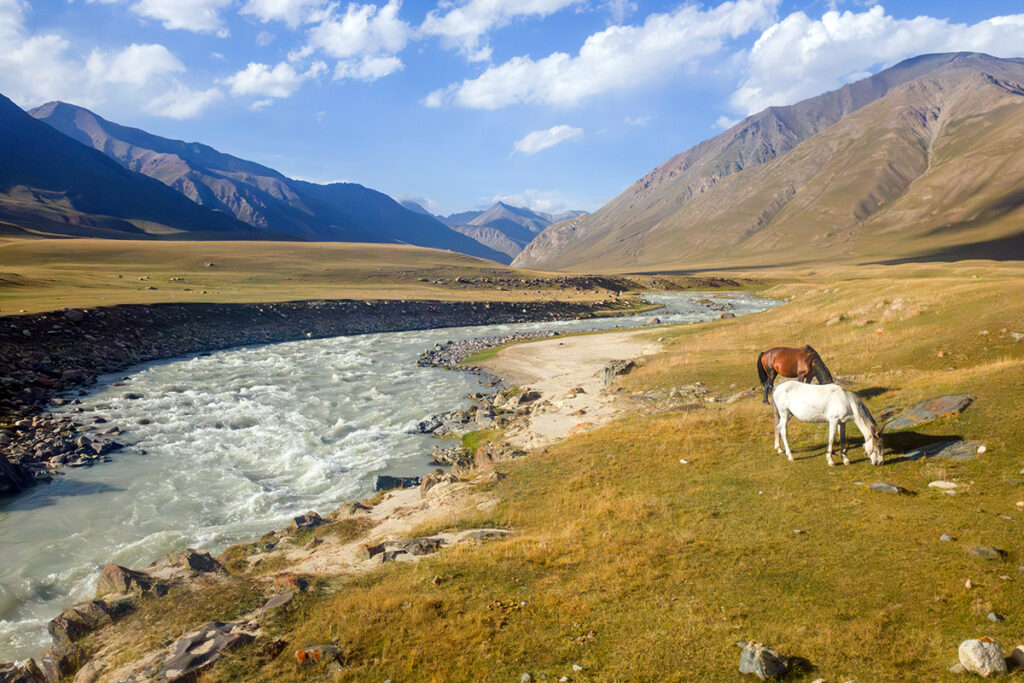
It may sound clichéd, but it’s really true that my favorite part of the adventure were the amazing landscapes and environments. The mountains are so steep, and there is so much variety! I experienced so many emotions riding through these landscapes. What an extraordinary country to travel on an adventure bike, with huge challenges every day! I also loved riding in the evenings, although I usually stopped to sleep no later than 10:30 p.m. Night-time riding was peaceful; there were fewer cars, less wind, and less heat. That was nice, even though I always felt I was missing out on seeing some amazing sights.
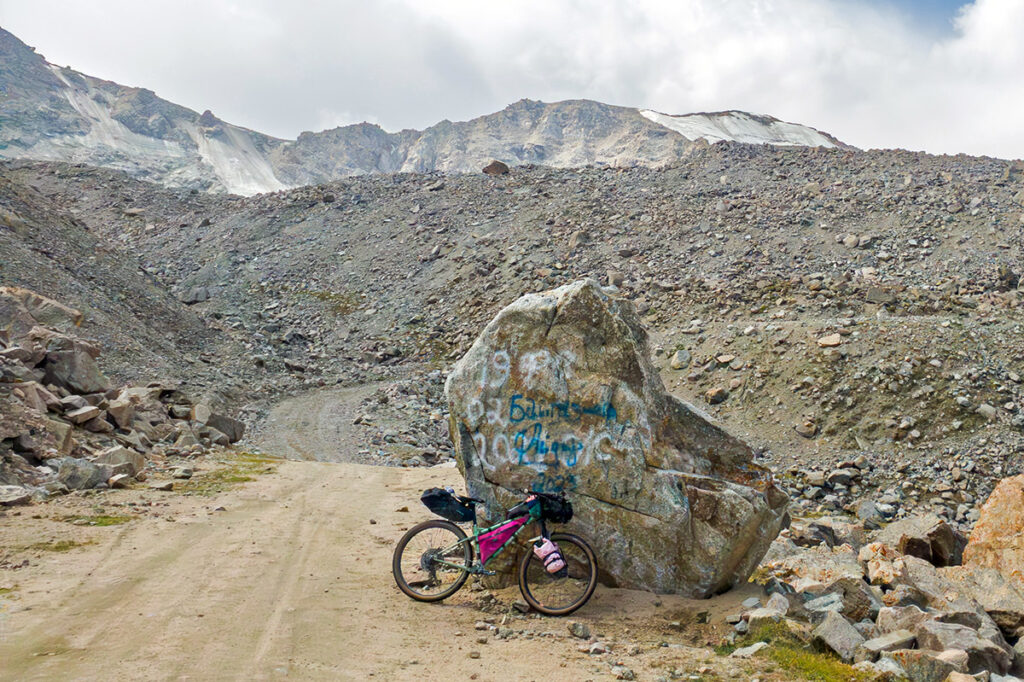
Riding alone gave me a lot of serenity, despite the fact that I sometimes felt lonely and isolated in the moment. I found it reassuring to know that there were other cyclists around, even if I did not see any of them for long periods. And when our paths crossed here or there, and I shared the road for a few kilometers with these inspiring people, it gave me so much energy and motivation to surpass myself! Without them around me, I doubt I would have gone as far as I did.

If I didn’t finish the Silk Road Mountain Race, it’s definitely because something wasn’t right. Yes, I felt fine during the ride, but during the last two days I experienced a cumulative physical and mental fatigue that was extreme—more than I could overcome.

In fact, the first 48 hours of the challenge were probably among the most difficult. I covered ‘only’ 210 km (130 miles) in two days. Climbing 4,700 m (15,000 ft), with temperatures fluctuating between 40°C heat (104°F) and freezing, twelve hours of rain, the effects of the altitude, and the climb and descent of the really rough Kegety Pass—all that took a toll on my body. At least I had the advantage that almost everything I encountered afterward seemed easier and smoother than what I experienced during those first two days!

But that confidence fell apart about 1,500 kilometers later, near the Shamshy Pass—which I had decided to attack in the evening. That turned out to be a mistake. I did not expect that the terrain would be so steep and the path so difficult to find in the darkness, and that emptied me. Once I arrived on the summit, at 3,400 m elevation, the next morning, I had to hike down for several hours on foot, as it was still too steep to ride, even downhill.
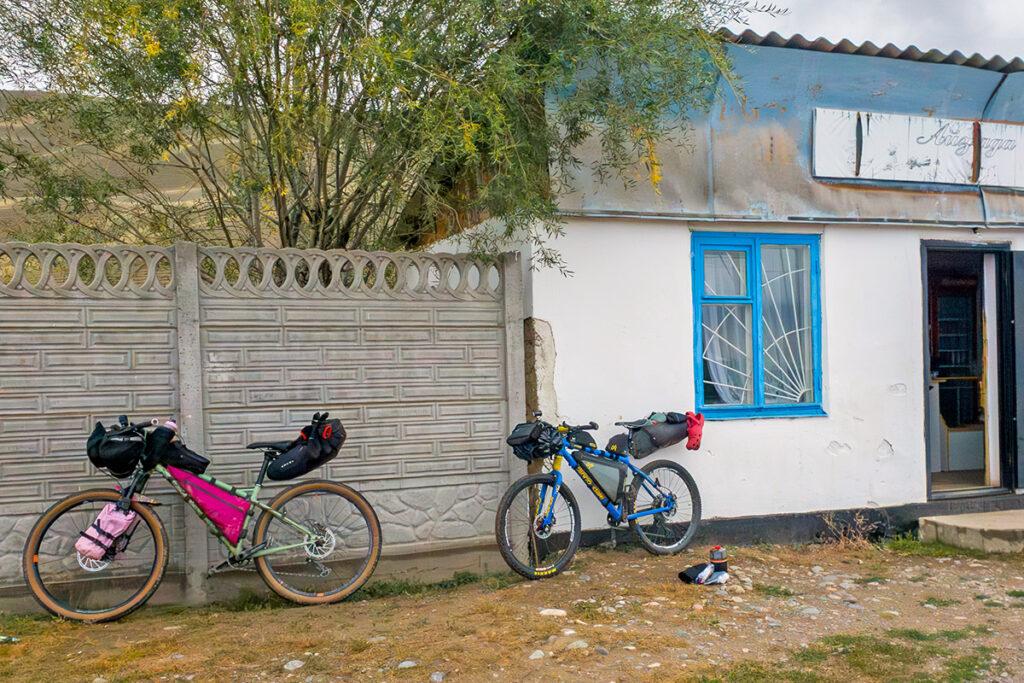
When I reached the bottom of the pass a few kilometers later, another rider was waiting for me. So nice! However, I realized that it was mathematically impossible to finish the race within the time limit, even if with less than 200 km to go, and a little over 24 hours to cover them. At that moment, everything collapsed. I had no energy left for moving forward, for eating well, and especially for evaluating the options I had left. I arrived at the next village in pain and misery, and I officially abandoned the race.
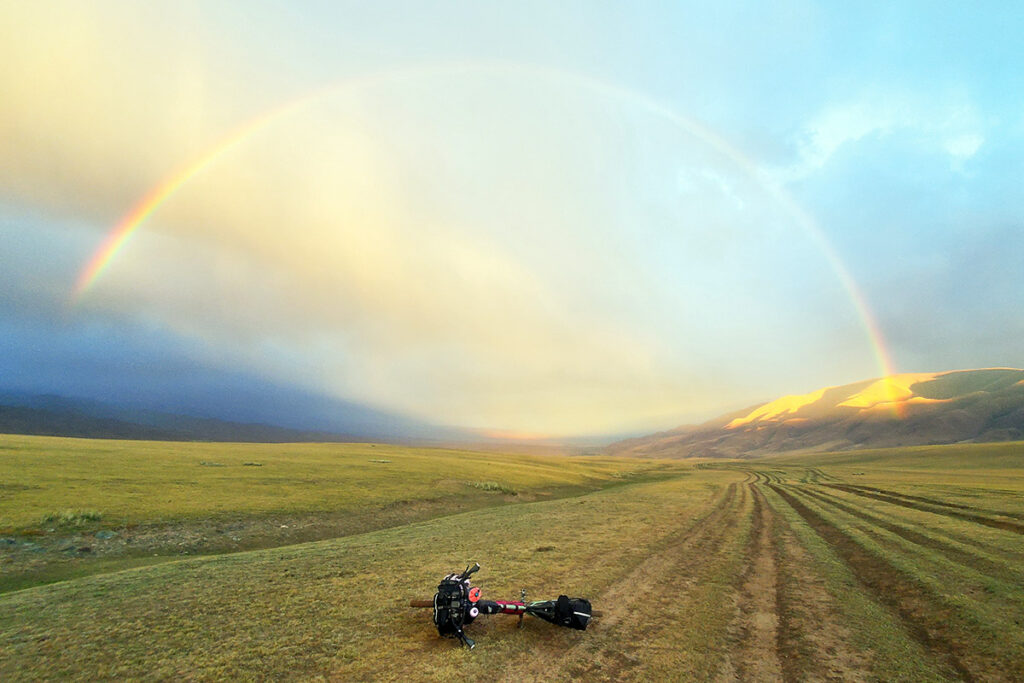
I don’t know whether I’ll do another ultracycling race some day, but if I do, I’ll surely not go as far (and maybe choose a less exotic location). To go to the other end of the planet to ride as fast as possible is a concept that I’m still wrapping my head around. That’s partially why I chose Kyrgyzstan, a country where I had cycled 13 years ago. That previous experience softened the culture shock and gave me certain points of reference and I also remembered a few words of Kyrgyz. I also felt more at peace with the fact that, this time, I’d blow through this amazing country like a gust of wind.
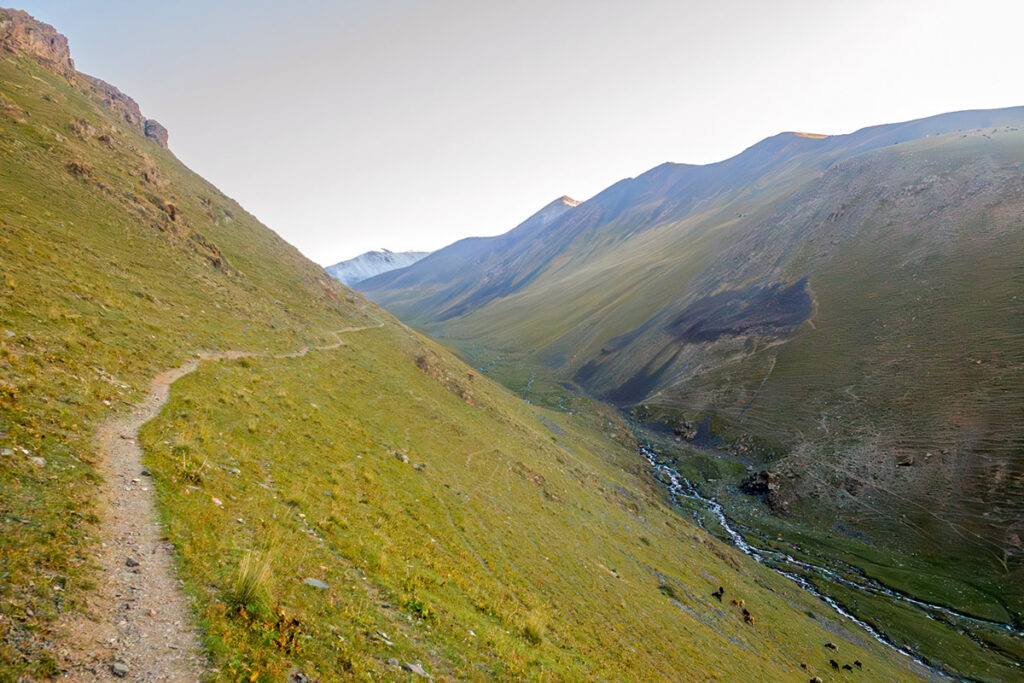
One often hears that the Silk Road Mountain Race is the most difficult bike race in the world. Since this was my first race of this type, and since the route changes from one year to the next, it is difficult for me to offer an opinion on this subject… On the one hand, I could get that far despite my training being relatively rudimentary. So perhaps the race is not that difficult? On the other hand, I did not finish despite my experience, my preparation, my carefully chosen equipment, and my lucky star. That means it can’t be all that easy, either!

One thing is certain: Carefully selecting my bike and my equipment, without compromise, made a huge difference in my ride. I still can’t believe how well my Panorama Cycles Taiga held up, considering how many water crossing there were, how often it fell over or the derailleur got banged during hike-a-bike sections. I did not even have to adjust the derailleur. Of course, there’s always a certain element of luck…
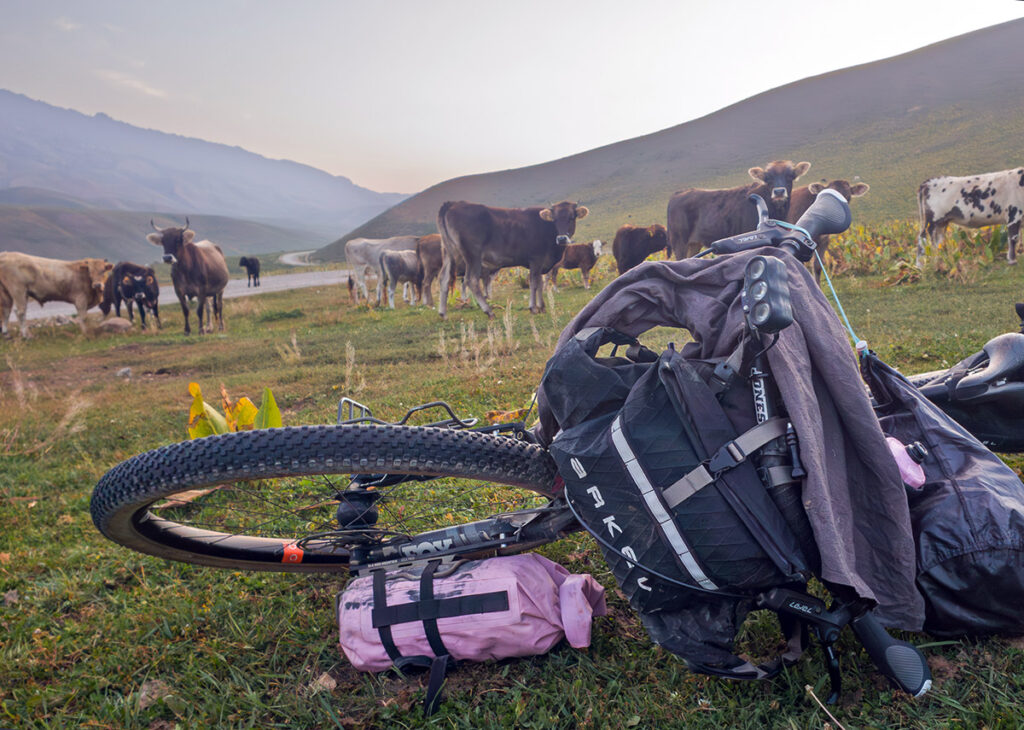
For the wheels and accessories, the efficiency of the SON generator hub, installed by my shop Station 210 – Atelier des roues, allowed me to be 100% autonomous with respect to electricity, and that despite my slow speed… That meant one less worry—not having to find electricity. That was huge, because there not many places were connected to the grid!

My only major mechanical problem was a 2.5 centimeter (1″) cut in the sidewall of my rear tire. That happened suddenly during a steep descent, less than 10 km from Checkpoint 3. Most riders in the race experienced some tire problems—that’s almost inevitable on such a long and rough course. Even with this mishap, my Rene Herse Fleecer Ridge Endurance tires turned out to be excellent for the course. My roadside repair held up for the remainder of the course. Even though I was running an inner tube after that, I had no other flats, despite the rough terrain.

As far as comfort on the bike is concerned, things worked very well. Fortunately, there were lots of hike-a-bikes and ups and downs, so I changed my position frequently. I had no saddle sores or major discomfort. I was happy that I wore cycling shorts without suspenders and not bibs, which probably would not have been great with my small backpack and the many layers of clothes I wore when temperatures dropped.
To conclude this long recap, I feel truly privileged that I was able to realize another dream of mine and participate in the Silk Road Mountain Race. I think that the support from my family, friends and community, as well as the encounters on the road, made all the difference when it came to my perseverence and determination. Thank you!
More Information:
- Marie-Pierre’s Instagram
- Video of Marie-Pierre’s bike and gear
- Marie-Pierre’s GPS track from the race


